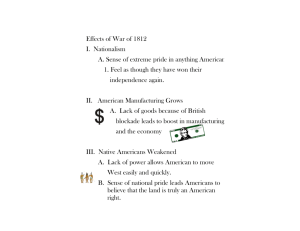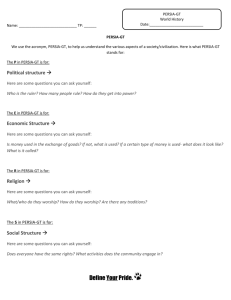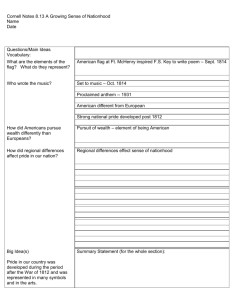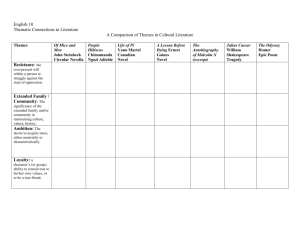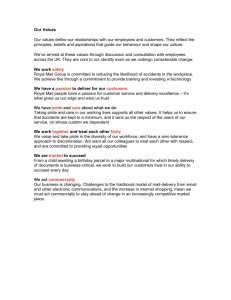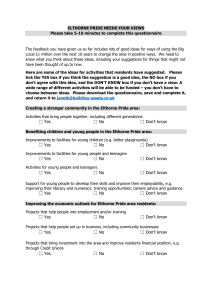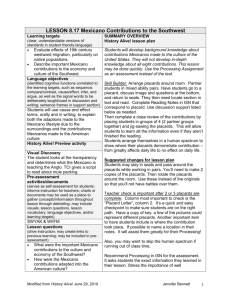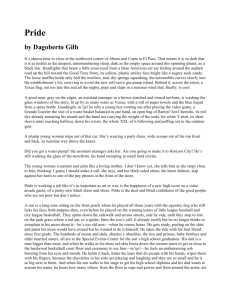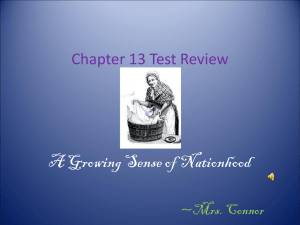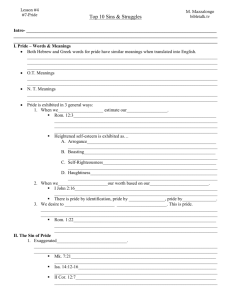LESSON 8 Creating the Constitution
advertisement
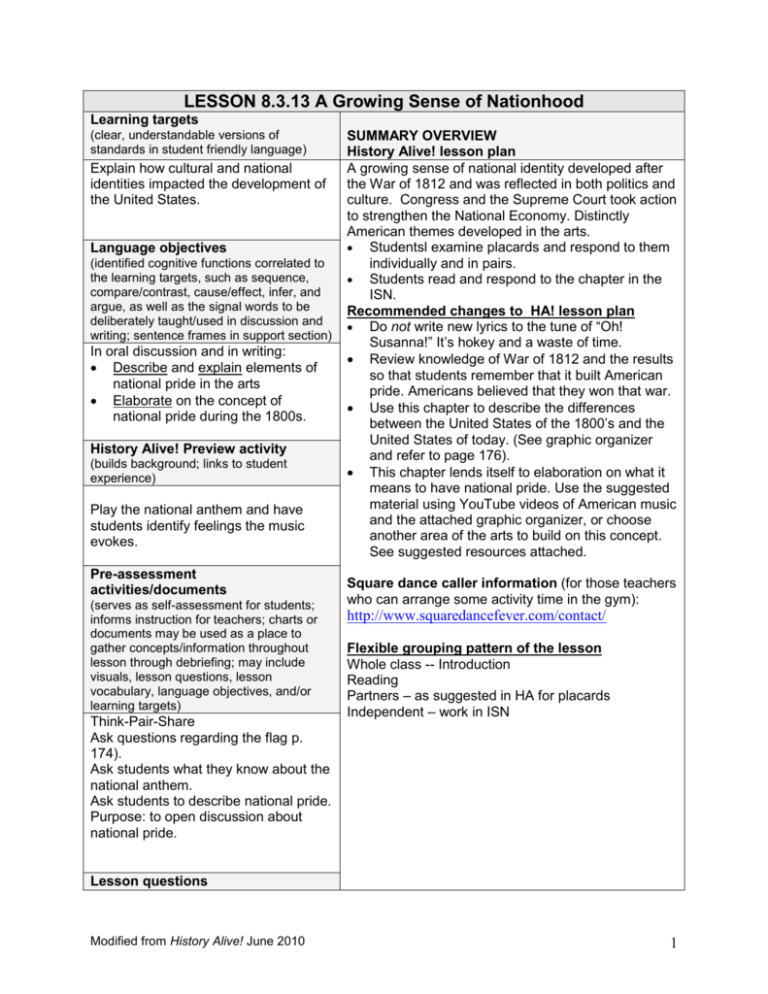
LESSON 8.3.13 A Growing Sense of Nationhood Learning targets (clear, understandable versions of standards in student friendly language) Explain how cultural and national identities impacted the development of the United States. Language objectives (identified cognitive functions correlated to the learning targets, such as sequence, compare/contrast, cause/effect, infer, and argue, as well as the signal words to be deliberately taught/used in discussion and writing; sentence frames in support section) In oral discussion and in writing: Describe and explain elements of national pride in the arts Elaborate on the concept of national pride during the 1800s. History Alive! Preview activity (builds background; links to student experience) Play the national anthem and have students identify feelings the music evokes. Pre-assessment activities/documents (serves as self-assessment for students; informs instruction for teachers; charts or documents may be used as a place to gather concepts/information throughout lesson through debriefing; may include visuals, lesson questions, lesson vocabulary, language objectives, and/or learning targets) Think-Pair-Share Ask questions regarding the flag p. 174). Ask students what they know about the national anthem. Ask students to describe national pride. Purpose: to open discussion about national pride. SUMMARY OVERVIEW History Alive! lesson plan A growing sense of national identity developed after the War of 1812 and was reflected in both politics and culture. Congress and the Supreme Court took action to strengthen the National Economy. Distinctly American themes developed in the arts. Studentsl examine placards and respond to them individually and in pairs. Students read and respond to the chapter in the ISN. Recommended changes to HA! lesson plan Do not write new lyrics to the tune of “Oh! Susanna!” It’s hokey and a waste of time. Review knowledge of War of 1812 and the results so that students remember that it built American pride. Americans believed that they won that war. Use this chapter to describe the differences between the United States of the 1800’s and the United States of today. (See graphic organizer and refer to page 176). This chapter lends itself to elaboration on what it means to have national pride. Use the suggested material using YouTube videos of American music and the attached graphic organizer, or choose another area of the arts to build on this concept. See suggested resources attached. Square dance caller information (for those teachers who can arrange some activity time in the gym): http://www.squaredancefever.com/contact/ Flexible grouping pattern of the lesson Whole class -- Introduction Reading Partners – as suggested in HA for placards Independent – work in ISN Lesson questions Modified from History Alive! June 2010 1 (drive instruction; may create links to previous learning; may be included in preassessment) What event(s) prompted a growth in national unity and pride? How was national pride demonstrated in the arts? What was the Era of Good Feelings? Additional background building (streaming video segments, DVD, map review, read aloud of a related piece of fiction, etc.) Literature from EMC Key content vocabulary (assessed) Capitalism National Bank the arts READING SUPPORT Lesson-specific instructional supports http://groups.teachtci.com/ * see Enrichment Plan for Compacting/Extensions Suggested strategies for Focus pages/paragraphs for Thinking or process-related introduction interactive read guided reading group words aloud (ex. Bloom’s) Look at the American flag on Introduction. Describe p. 174 and answer the p. 176 – The American questions orally in pairs or as Landscape in the Early Produce = a whole class. 1800’s. Divise=Design=Construct p. 177 , paragraph 3: Uncle Sam Explain p. 178 Economic Nationalism p. 180 -182 the arts WRITING SUPPORT Lesson-specific instructional supports http://groups.teachtci.com/ * see Enrichment Plan for Compacting/Extensions Sentence frames for parts of the lesson During the review of the placards have the students respond in writing to these: 1. _____can be described as ____. 2. _____ has ____ and is known for ________. 3. _______ seems to suggest that ____. DISCUSSION SUPPORT Modified from History Alive! June 2010 2 Lesson-specific instructional supports http://groups.teachtci.com/ * see Enrichment Plan for Compacting/Extensions Sentence frames for parts of the lesson For students who have difficulty with writing, or to expedite the lesson, use the following for oral discussion when analyzing the placards: 1. _____can be described as ____. 2. _____ has ____ and is known for ________. 3. _______ seems to suggest that ____. FORMATIVE ASSESSMENTS (for student and teacher use) “Check for understanding” Checkpoints in Student Questions for points during activities Interactive Notebook exit and entrance slips Ask students to name three elements of culture that enhance national pride. This is a shortest chapter in the notebook. The student work could be reviewed and assessed in one lesson. . Processing Assignment REVIEW Games Which piece of literature and/or author illustrated the excitement of the new American west? What is a national bank? Ask students to describe what made President Monroe a popular president Other (also serves as a formative assessment) Preparing for assessment: The HA material does not contain a processing assignment, so this is left to the discretion of the teacher. Alternate assessment: Have students create a patriotic artistic piece of their own and have them describe its value. Some examples: a song a rap a new version of the flag using “graffiti” (an American art form) to create a visual LESSON ASSESSMENT AND KEY The assessment and key can be used as found in HA. Modified from History Alive! June 2010 3
